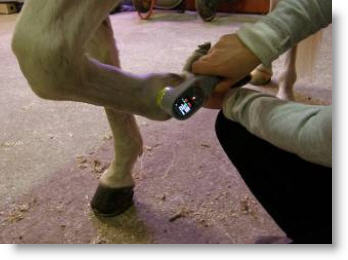Equine Therapy Success Stories: Genuine People, Genuine Emotional Improvements
Equine Therapy Success Stories: Genuine People, Genuine Emotional Improvements
Blog Article
Reviewing the Performance of Laser Therapy in Horse Treatment for Injury Rehab
The analysis of laser treatment's effectiveness in equine injury rehabilitation pivots on several factors, including healing time, pain reduction, and cells regrowth. Veterinarians frequently observe exceptional end results with laser treatment contrasted to traditional approaches, placing it as an essential aspect in equine care.
Understanding Laser Treatment
Laser treatment has actually ended up being an essential device in veterinary medication, especially in the treatment of equine problems. Recognized for its non-invasive nature and effectiveness, laser treatment involves the application of details wavelengths of light to promote tissue fixing and reduce swelling. This restorative modality is increasingly preferred for its capability to increase the recovery process in horses struggling with a range of bone and joint injuries and chronic conditions.
The main device behind laser treatment is its ability to improve mobile features. Additionally, laser treatment promotes vasodilation, enhancing blood circulation and oxygen shipment to damaged cells, therefore speeding up recovery.
In equine medicine, laser therapy is especially useful for problems such as tendonitis, osteo arthritis, and wound recovery. The method is lauded for its pain-relieving homes, enabling horses to restore flexibility and function more rapidly. Veterinarians also value its very little adverse effects compared to other therapy methods, making it a reputable and safe option for equine care.

Exactly How Laser Treatment Works

Upon absorption, these photons cause a collection of biochemical adjustments, enhancing mitochondrial function and causing enhanced adenosine triphosphate (ATP) production. This rise in ATP accelerates cellular metabolic rate, advertising cells repair work and regrowth. In addition, laser treatment modulates inflammatory feedbacks by influencing cytokine levels and reducing oxidative stress and anxiety, therefore reducing pain and swelling.
One more considerable element of laser therapy is its role in enhancing microcirculation. The therapy promotes vasodilation, enhancing blood flow and oxygen distribution to broken cells (Equine Therapy). This helps with the removal of cellular particles and sustains the spreading of fibroblasts and collagen synthesis, vital for injury healing
Medical Proof
The effectiveness of laser therapy in equine treatment has actually been validated via numerous medical research studies, showcasing its healing possible throughout an array of conditions. A research carried out by Turner et al. (2012) showed that horses treated with low-level laser therapy (LLLT) for ligament injuries exhibited sped up healing compared to those getting traditional therapies.
Likewise, research study by Johnson and coworkers (2015) concentrated on equine muscle mass injuries, exposing that laser treatment substantially expedited muscle mass fiber regrowth and minimized muscular tissue stiffness. Medical analyses have shown that laser treatment can alleviate chronic conditions such as osteoarthritis.
Vet Insights

Veterinarians also appreciate the flexibility more information of laser treatment. She points out that laser treatment can be tailored my link to the certain requirements of each equine, making certain ideal end results.
In addition, vets value the capability to incorporate laser therapy with other treatment modalities. This multimodal technique can enhance total therapy effectiveness, giving a comprehensive solution for equine rehab. Such recommendations from seasoned professionals emphasize the growing acceptance and application of laser therapy in equine medicine.
Practical Considerations
A key facet of implementing laser therapy in equine treatment involves recognizing the sensible considerations that guarantee its efficiency and safety and security. It is essential to choose the suitable laser gadget, as various types differ in wavelength, power, and penetration deepness. Veterinarians have to be fluent in these parameters to customize therapy methods successfully to each injury kind
Moreover, the frequency and duration of laser therapy sessions require careful planning to maximize therapeutic benefits while decreasing any prospective unfavorable results. Consistent tracking of the equine's response to therapy can direct required modifications in the treatment routine. Establishing a risk-free and regulated atmosphere throughout therapies is additionally vital to protect against unintentional direct exposure to laser exhausts, which might damage both the equine and the trainer.
Training and certification of employees carrying out laser therapy are paramount to make sure correct method and to support security standards. In addition, preserving accurate documents of each session, including laser settings and observed results, is important for assessing the total performance of the therapy and for making data-driven choices.
Final Thought
Laser therapy has actually emerged as an efficient technique in equine injury rehab, supplying substantial advantages in healing time, discomfort alleviation, and tissue recovery. For ideal outcomes, constant surveillance and you could try these out personalized treatment protocols continue to be essential in leveraging the complete possibility of laser therapy in equine care.
Report this page